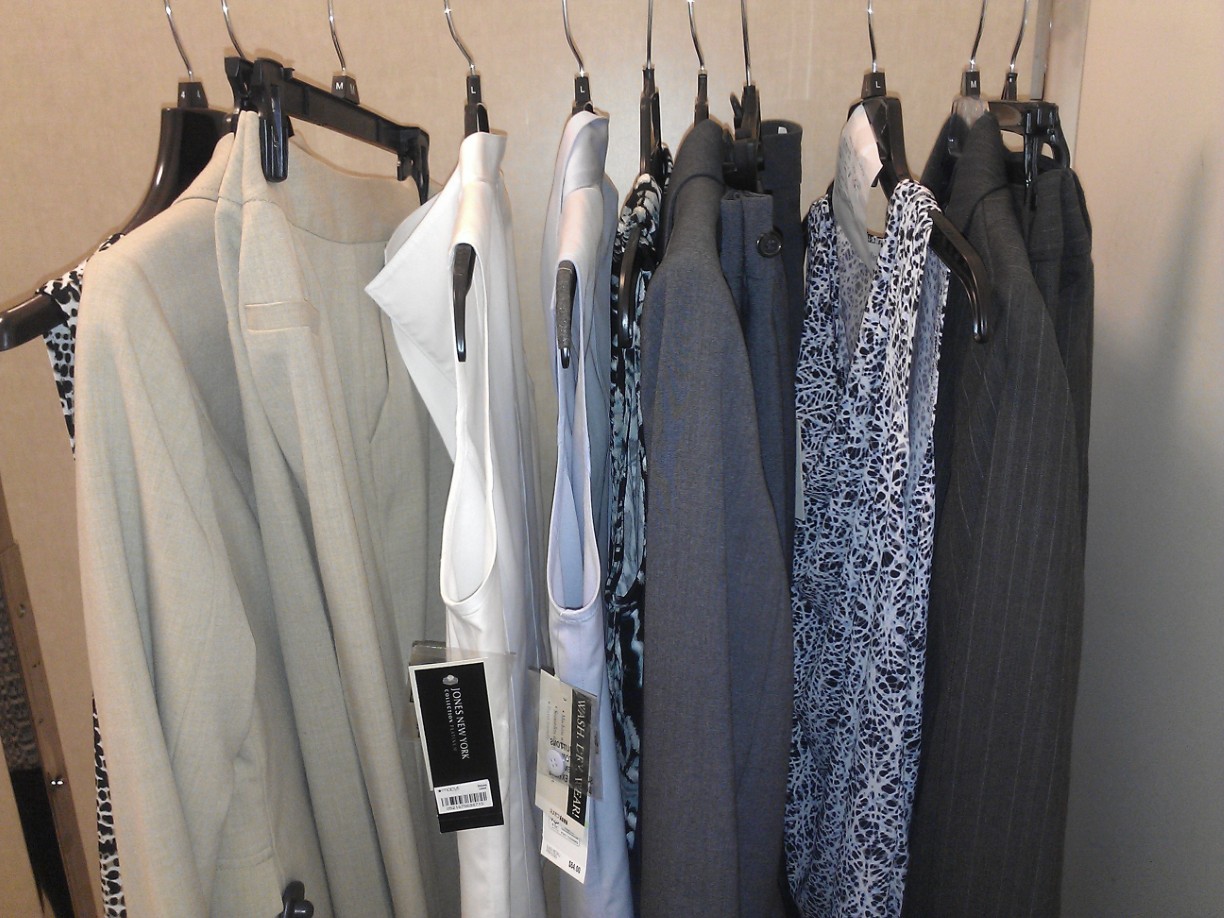 Gravitas means showing decorum, dignity, or seriousness. It is an important trait to display in order to make a positive first impression and to stand out in a crowded field. First impressions happen quickly—and the chance to make a good one is quickly lost. Recently, I attended a fundraiser for a presidential candidate who is not a frontrunner in the race. The candidate rushed in late, tried to pay attention to her supporters, and attempted to smile easily. Although the candidate has long-term success in the political arena, and the ability to overcome a less than stellar first impression, she should have handled her entrance differently. Instead of rushing into the room, the candidate should have taken a moment in the car to set the tone, preparing to walk confidently into the room. She should have paused upon her entrance and waited for the crowd to settle (they would have because she did). In addition, the candidate’s smile looked a bit weary and her clothing choices did not look fresh. Taking time in the car to change into a new jacket, while her staff managed the crowd, would have been wise. It was a missed opportunity for the candidate to show gravitas and to make a strong impression.
Gravitas means showing decorum, dignity, or seriousness. It is an important trait to display in order to make a positive first impression and to stand out in a crowded field. First impressions happen quickly—and the chance to make a good one is quickly lost. Recently, I attended a fundraiser for a presidential candidate who is not a frontrunner in the race. The candidate rushed in late, tried to pay attention to her supporters, and attempted to smile easily. Although the candidate has long-term success in the political arena, and the ability to overcome a less than stellar first impression, she should have handled her entrance differently. Instead of rushing into the room, the candidate should have taken a moment in the car to set the tone, preparing to walk confidently into the room. She should have paused upon her entrance and waited for the crowd to settle (they would have because she did). In addition, the candidate’s smile looked a bit weary and her clothing choices did not look fresh. Taking time in the car to change into a new jacket, while her staff managed the crowd, would have been wise. It was a missed opportunity for the candidate to show gravitas and to make a strong impression.
 I have a Dell laptop and a MacBook Air laptop. Microsoft Office products are available for PC and Apple computers. With the Dell, I use Office 365—a subscription-based version of the Microsoft Office suite. With the MacBook Air, I use Office for Mac. First introduced in 1989, Office for Mac has become virtually the same as running a Microsoft Office product on a PC. Both products are readily available. In a shopping center near me, the Microsoft store and the Apple store are across the way from each other. People have long considered Apple to offer superior service in helping the consumer manage and troubleshoot their products. Apple’s chat service is especially helpful. Microsoft has stepped up their service and offers a program called Assure. Both companies have learned the value of good customer service and made their products compatible for the user.
I have a Dell laptop and a MacBook Air laptop. Microsoft Office products are available for PC and Apple computers. With the Dell, I use Office 365—a subscription-based version of the Microsoft Office suite. With the MacBook Air, I use Office for Mac. First introduced in 1989, Office for Mac has become virtually the same as running a Microsoft Office product on a PC. Both products are readily available. In a shopping center near me, the Microsoft store and the Apple store are across the way from each other. People have long considered Apple to offer superior service in helping the consumer manage and troubleshoot their products. Apple’s chat service is especially helpful. Microsoft has stepped up their service and offers a program called Assure. Both companies have learned the value of good customer service and made their products compatible for the user.
 Body language, meaning how we stand, the way we walk in a room, and the pacing of our steps, all speak to our confidence. In my favorite movie, Star Trek, I noticed the difference between the way Jim Kirk (now played by Chris Pine) walked onto the bridge and the way Dr. Spock did it. Despite the difference in approaches, both characters radiated an air of quiet confidence.
Body language, meaning how we stand, the way we walk in a room, and the pacing of our steps, all speak to our confidence. In my favorite movie, Star Trek, I noticed the difference between the way Jim Kirk (now played by Chris Pine) walked onto the bridge and the way Dr. Spock did it. Despite the difference in approaches, both characters radiated an air of quiet confidence.
Watch the difference between first class and premier status boarding passengers the next time you people watch at the airport. Think about how you compare and who might you select as a role model.
 Megan Markle’s designer, Clare Waight Keller, head of Givenchy, designed Megan’s wedding dress. She was quoted in NYT Styles’ Q&A on the fact that clothes convey meaningful messages. Also, Oprah says clothes connect you to the world.
Megan Markle’s designer, Clare Waight Keller, head of Givenchy, designed Megan’s wedding dress. She was quoted in NYT Styles’ Q&A on the fact that clothes convey meaningful messages. Also, Oprah says clothes connect you to the world.
What one wears should make you feel good. Clothing messages a quick assessment for the audience about how approachable or even intimidating you are as well as whether or not you possess style. While Clare doesn’t feel this way, she confirms some think fashion and clothing as frivolous. I emphatically agree with Clare. Clothing sends a statement about all of us!
 It’s always been who knows you not who you know. The who knows you is your capital in business as well as socially. Building deep relationships through regular contact is best. However, because of busy schedules, getting together for a cup of coffee is not always doable. Being involved in activities where natural connections are made through committee memberships or event participation works best.
It’s always been who knows you not who you know. The who knows you is your capital in business as well as socially. Building deep relationships through regular contact is best. However, because of busy schedules, getting together for a cup of coffee is not always doable. Being involved in activities where natural connections are made through committee memberships or event participation works best.
 The recent announcement of Lonnie G. Bunch III as the next Secretary of the Smithsonian Institution reminded me of a recent Chicago Tribune article where he was quoted saying politics can be a good thing.
The recent announcement of Lonnie G. Bunch III as the next Secretary of the Smithsonian Institution reminded me of a recent Chicago Tribune article where he was quoted saying politics can be a good thing.
Lonnie mentioned the way he could bring together all the folks to ensure the success of the Chicago History Museum. Successful leaders understand that everyone working together on goals pushes projects forward – long term.
 I found out later in life it how much it matters to like, and even be passionate about what one is involved in. It seems that earlier in life earning a living was the first goal…to pay bills and still be left with some freedom to live a life that matters.
I found out later in life it how much it matters to like, and even be passionate about what one is involved in. It seems that earlier in life earning a living was the first goal…to pay bills and still be left with some freedom to live a life that matters.
In my travels, I like and enjoy being around people that make a difference and demonstrate similar values to mine. It is especially important because when we hit a bump in the road, the passion and joy of the work will push us through it.
There are many books that focus on the importance of passion. Some simple exercises to discover what you may be passionate about include journaling and taking a pause to reflect about a moment that brings you a feeling of a brilliance. It is like when athletes say they were in “the zone”. It worked for me.
 How many times have we tried to reach a customer service person on the phone but instead of getting a person, an automatic system responds with a long list of numbers to call? In appreciation to all the companies that offer this, we like the ones that make it simple after you hit the correct number! The companies that do well with the first customer service contact, usually put an efficient, inclusive agent on the phone that wants to help get the problem resolved.
How many times have we tried to reach a customer service person on the phone but instead of getting a person, an automatic system responds with a long list of numbers to call? In appreciation to all the companies that offer this, we like the ones that make it simple after you hit the correct number! The companies that do well with the first customer service contact, usually put an efficient, inclusive agent on the phone that wants to help get the problem resolved.
When working with clients or others to solve a problem, resolve the issue so that everyone leaves with a sense of closure. This burnishes a reputation of inclusiveness and competence.

In a recent Tribune article, a world traveler was asked how he engaged folks in foreign countries not speaking the language. He indicated that a smile and direct eye contact cuts through language barriers all across the world!
This is true whenever we meet folks we don’t know. Prior to even introducing yourself, the direct eye contact and a smile initiates the engagement. This goes for all situations including intense ones. The first contact propels the next step of engagement.
 There is always someone on a team or in the audience that makes the situation or subject about them, good or bad. Either way, it steers the objective away from the core issue. The best way to bring the conversation back to the point is to not spare them, but to say, “let’s circle back, or we were talking about this.”
There is always someone on a team or in the audience that makes the situation or subject about them, good or bad. Either way, it steers the objective away from the core issue. The best way to bring the conversation back to the point is to not spare them, but to say, “let’s circle back, or we were talking about this.”
 Gravitas means showing decorum, dignity, or seriousness. It is an important trait to display in order to make a positive first impression and to stand out in a crowded field. First impressions happen quickly—and the chance to make a good one is quickly lost. Recently, I attended a fundraiser for a presidential candidate who is not a frontrunner in the race. The candidate rushed in late, tried to pay attention to her supporters, and attempted to smile easily. Although the candidate has long-term success in the political arena, and the ability to overcome a less than stellar first impression, she should have handled her entrance differently. Instead of rushing into the room, the candidate should have taken a moment in the car to set the tone, preparing to walk confidently into the room. She should have paused upon her entrance and waited for the crowd to settle (they would have because she did). In addition, the candidate’s smile looked a bit weary and her clothing choices did not look fresh. Taking time in the car to change into a new jacket, while her staff managed the crowd, would have been wise. It was a missed opportunity for the candidate to show gravitas and to make a strong impression.
Gravitas means showing decorum, dignity, or seriousness. It is an important trait to display in order to make a positive first impression and to stand out in a crowded field. First impressions happen quickly—and the chance to make a good one is quickly lost. Recently, I attended a fundraiser for a presidential candidate who is not a frontrunner in the race. The candidate rushed in late, tried to pay attention to her supporters, and attempted to smile easily. Although the candidate has long-term success in the political arena, and the ability to overcome a less than stellar first impression, she should have handled her entrance differently. Instead of rushing into the room, the candidate should have taken a moment in the car to set the tone, preparing to walk confidently into the room. She should have paused upon her entrance and waited for the crowd to settle (they would have because she did). In addition, the candidate’s smile looked a bit weary and her clothing choices did not look fresh. Taking time in the car to change into a new jacket, while her staff managed the crowd, would have been wise. It was a missed opportunity for the candidate to show gravitas and to make a strong impression. 

 I have a Dell laptop and a MacBook Air laptop. Microsoft Office products are available for PC and Apple computers. With the Dell, I use Office 365—a subscription-based version of the Microsoft Office suite. With the MacBook Air, I use Office for Mac. First introduced in 1989, Office for Mac has become virtually the same as running a Microsoft Office product on a PC. Both products are readily available. In a shopping center near me, the Microsoft store and the Apple store are across the way from each other. People have long considered Apple to offer superior service in helping the consumer manage and troubleshoot their products. Apple’s chat service is especially helpful. Microsoft has stepped up their service and offers a program called Assure. Both companies have learned the value of good customer service and made their products compatible for the user.
I have a Dell laptop and a MacBook Air laptop. Microsoft Office products are available for PC and Apple computers. With the Dell, I use Office 365—a subscription-based version of the Microsoft Office suite. With the MacBook Air, I use Office for Mac. First introduced in 1989, Office for Mac has become virtually the same as running a Microsoft Office product on a PC. Both products are readily available. In a shopping center near me, the Microsoft store and the Apple store are across the way from each other. People have long considered Apple to offer superior service in helping the consumer manage and troubleshoot their products. Apple’s chat service is especially helpful. Microsoft has stepped up their service and offers a program called Assure. Both companies have learned the value of good customer service and made their products compatible for the user.  Megan Markle’s designer, Clare Waight Keller, head of Givenchy, designed Megan’s wedding dress. She was quoted in NYT Styles’ Q&A on the fact that clothes convey meaningful messages. Also, Oprah says clothes connect you to the world.
Megan Markle’s designer, Clare Waight Keller, head of Givenchy, designed Megan’s wedding dress. She was quoted in NYT Styles’ Q&A on the fact that clothes convey meaningful messages. Also, Oprah says clothes connect you to the world. It’s always been who knows you not who you know. The who knows you is your capital in business as well as socially. Building deep relationships through regular contact is best. However, because of busy schedules, getting together for a cup of coffee is not always doable. Being involved in activities where natural connections are made through committee memberships or event participation works best.
It’s always been who knows you not who you know. The who knows you is your capital in business as well as socially. Building deep relationships through regular contact is best. However, because of busy schedules, getting together for a cup of coffee is not always doable. Being involved in activities where natural connections are made through committee memberships or event participation works best. The recent announcement of Lonnie G. Bunch III as the next Secretary of the Smithsonian Institution reminded me of a recent Chicago Tribune article where he was quoted saying politics can be a good thing.
The recent announcement of Lonnie G. Bunch III as the next Secretary of the Smithsonian Institution reminded me of a recent Chicago Tribune article where he was quoted saying politics can be a good thing. I found out later in life it how much it matters to like, and even be passionate about what one is involved in. It seems that earlier in life earning a living was the first goal…to pay bills and still be left with some freedom to live a life that matters.
I found out later in life it how much it matters to like, and even be passionate about what one is involved in. It seems that earlier in life earning a living was the first goal…to pay bills and still be left with some freedom to live a life that matters.
 There is always someone on a team or in the audience that makes the situation or subject about them, good or bad. Either way, it steers the objective away from the core issue. The best way to bring the conversation back to the point is to not spare them, but to say, “let’s circle back, or we were talking about this.”
There is always someone on a team or in the audience that makes the situation or subject about them, good or bad. Either way, it steers the objective away from the core issue. The best way to bring the conversation back to the point is to not spare them, but to say, “let’s circle back, or we were talking about this.”

